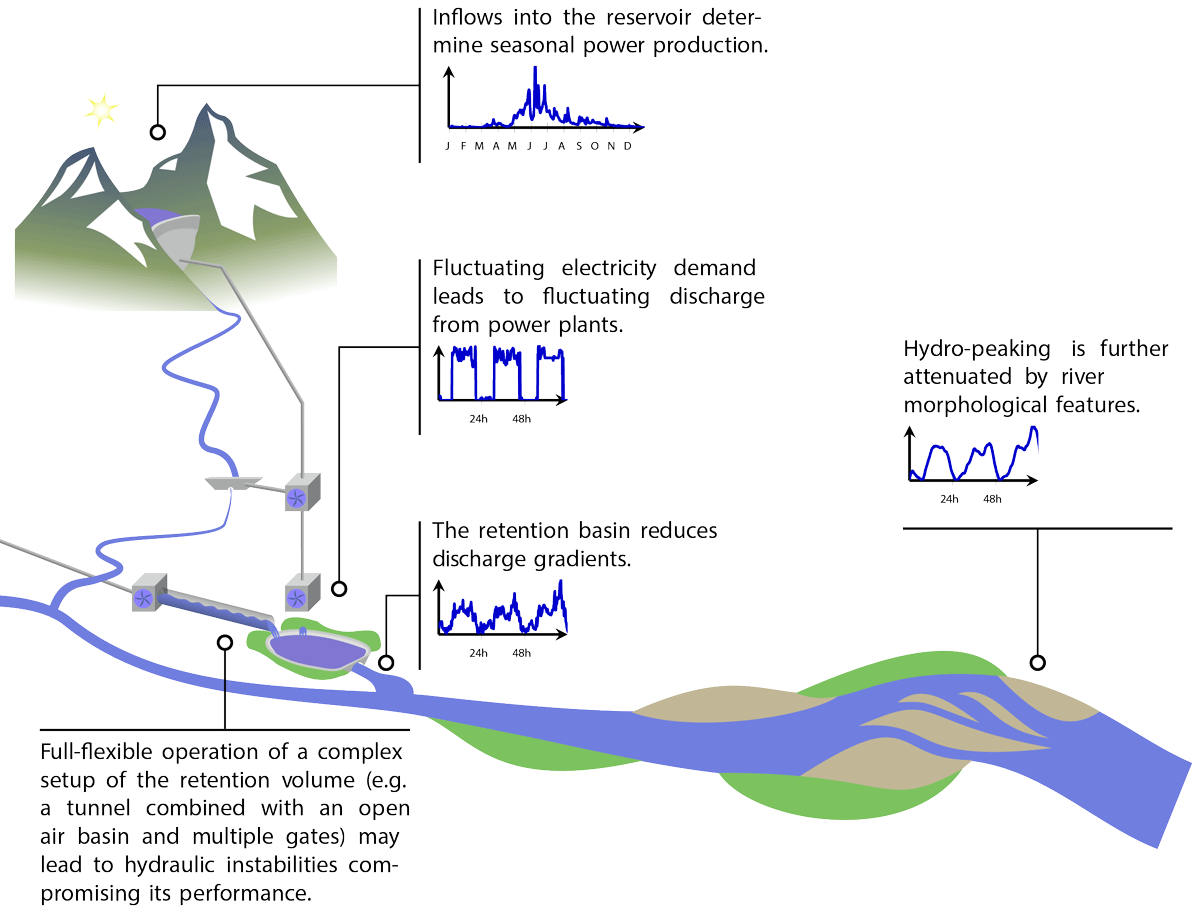Limiting Flushes
System Modeling to Mitigate Hydro-Peaking at New Storage Plants
System extensions and upgrades as well as an increased availability of new renewable energy sources will significantly affect the operation of hydropower plants. Hydro-peaking, resulting from intermittent discharge due to fluctuating power production, might affect the aquatic ecosystem of a river. To better cope with hydro-peaking in a changing environment, a team at Eawag and EPFL studied the example of a retention basin built for hydro-peaking remediation in Innertkirchen. By using models of relevant infrastructure elements and processes, the most effective mitigation measures can be selected and implemented. The tools developed within this case study will help to design and plan mitigation measures for hydro-peaking in other hydropower schemes and river systems.
In Innertkirchen (BE) a retention basin was built to manage hydro-peaking effects on the Aare river. It reduces the up- and down-surge rates without limiting the ratio between low and peak flow. The retention volume has a unique configuration, where the largest part of the volume is held underground in a tailrace tunnel. A much smaller part of the volume is constructed as an open-air basin. One power plant (Innertkirchen 1) discharges into the tailrace tunnel, while the other (Innertkirchen 2) discharges directly into the basin.
Currently, this retention basin reliably reduces hydro-peaking. This might not be true after further extensions of the current system. One potential extension is the construction of a new reservoir at Trift, aiming at providing storage in a catchment where there is none. Adding this reservoir will change the way the power stations are operated and, therefore, challenge the reliability of the present retention volume to reduce hydro-peaking. To evaluate the performance of the current hydro-peaking mitigation measures under changed boundary conditions, the hydropower system and the affected river ecosystem are analysed.
Based on different scenarios, the future performance of the retention volume was assessed using a mathematical programming optimisation model simulating the best possible operation strategy. The results show that an acceptable reduction of hydro-peaking can be achieved for most scenarios with the current basin configuration. However, operational flexibility might be limited. The unique setup of the retention volume, consisting of a tunnel, a basin and three different sets of gates, can cause hydraulic instabilities. Detailed hydraulic modelling provides insights into the dynamic operation of such a retention volume and will help identifying unfavourable operation sequences. This helps the operator to avoid conditions under which the retention volume becomes the operational bottleneck of the entire system. The local morphology of the river plays a complimentary role in attenuating hydro-peaking. Morphology not only affects the propagation of waves but also the extent of disturbance of fish populations during hydro-peaking events. To assess the impact of hydro-peaking further downstream, the propagation of discharge gradients are simulated using a numerical model. The aim is to characterise the contribution of riverbank morphology to surge gradient attenuation.

